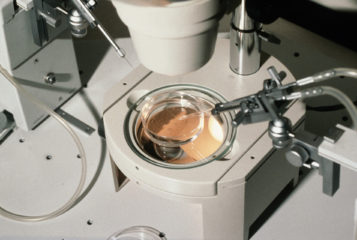The Public Bodies Bill - which empowers the UK Government to transfer the functions of the Human Fertilisation and Embryology Authority (HFEA), to other bodies - has received Royal Assent and has become the Public Bodies Act. This Act, which represents the realisation in statute of the Coalition Government's longstanding plans for a 'bonfire of the quangos', also makes it possible to transfer the functions of other arm's-length bodies including the Human Tissue Authority.
Following the creation of the Act, Cabinet Office Minister Francis Maude said: 'We said we would increase transparency and accountability, cut out waste and duplication, and we have.... The quango state will never again be allowed to spiral out of control'.
Some of the arm's-length bodies that were originally listed in the Public Bodies Bill, such as the Forestry Commission and the Youth Justice Board, were ultimately excluded from it following lobbying and amendments to the Bill in Parliament. Despite similar lobbying on behalf of the HFEA, and the intervention of politicians including Baroness Ruth Deech (crossbench peer and former HFEA Chair), attempts to win a reprieve for the fertility regulator were ultimately unsuccessful. A proposed amendment that would have excluded the HFEA from the Bill was voted on by the House of Lords earlier this year, but was narrowly defeated.
The existence and role of the HFEA are specified in the 1990 and 2008 Human Fertilisation and Embryology (HFE) Acts. Defenders of the HFEA argued that its inclusion in the Public Bodies Bill would threaten the protection afforded to the embryo by the HFE Acts. Health Minister Earl Frederick Howe argued that the reverse was true - that had the HFEA been excluded from the Public Bodies Bill, then the Government would have sought to transfer the HFEA's powers by amending the HFE Acts directly, thereby opening up the ethical provisions of the Acts to debate and revision by Parliament.
Further secondary legislation is required before transfer of the HFEA's functions can take place, and this transfer is unlikely to take place until the end of the current Parliament (it may take longer still). A central plank of the Government's argument for including the HFEA in the Bill, when this was challenged in Parliament, was that there would be ample opportunity for public input into the prospective transfer of the HFEA's functions and powers in the form of a public consultation. The consultation will include the option of transferring the HFEA's functions to the Care Quality Commission (CQC).Such a consultation is due to be launched by the Government shortly.
Regulation of fertility clinics is though expected to be transferred from the HFEA to the CQC, despite reluctance on the part of both regulators to embrace such a transfer. HFEA representatives have argued against the HFEA's abolition on several occasions, while CQC representatives have recently warned the Government that the CQC is overstretched, and consequently ill-placed to assume the HFEA's role.





Leave a Reply
You must be logged in to post a comment.